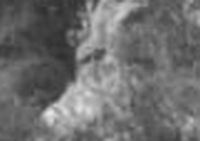deducer
Bronze Member
- Jan 7, 2014
- 2,281
- 4,360
- Primary Interest:
- Other
So , one stone heart is red-brown and the other was black . That is what the CP map says , the transition from the setting sun ( day ) to the moon ( night ) . Or , show a direction from the east to west .
deducer , you have one answer : where is the Latin heart in relation with the trail heart .
The CP paper (or rock) I do not consider a map as much as a map legend, or a list of things to look for when you are at the end of the journey. I will admit that I had struggled with the meaning of meus for a long time. As you know, it also exists on the LH, and is written down the same number of times on the LH as it is on the CP paper, which is yet another reason that it's hard to consider those items a forgery, since their respective discoveries were decades apart, and the rock itself was only rediscovered very recently.
What meus represented came to me in a moment of epiphany, and its contradictory nature (the word means "mine" as in possession, not mining), particularly in regard to the intentionally misspelled and misgendered los eglesia was in itself a big clue to me, and is furthermore something that only a person with a strong religious background would recognize or understand as far as what it represents; something the mapmaker(s) surely intended.
The LH, I now consider to have a dual purpose- being both legend and inventory.
I marvel at the cunning and ingenuity of it all.







